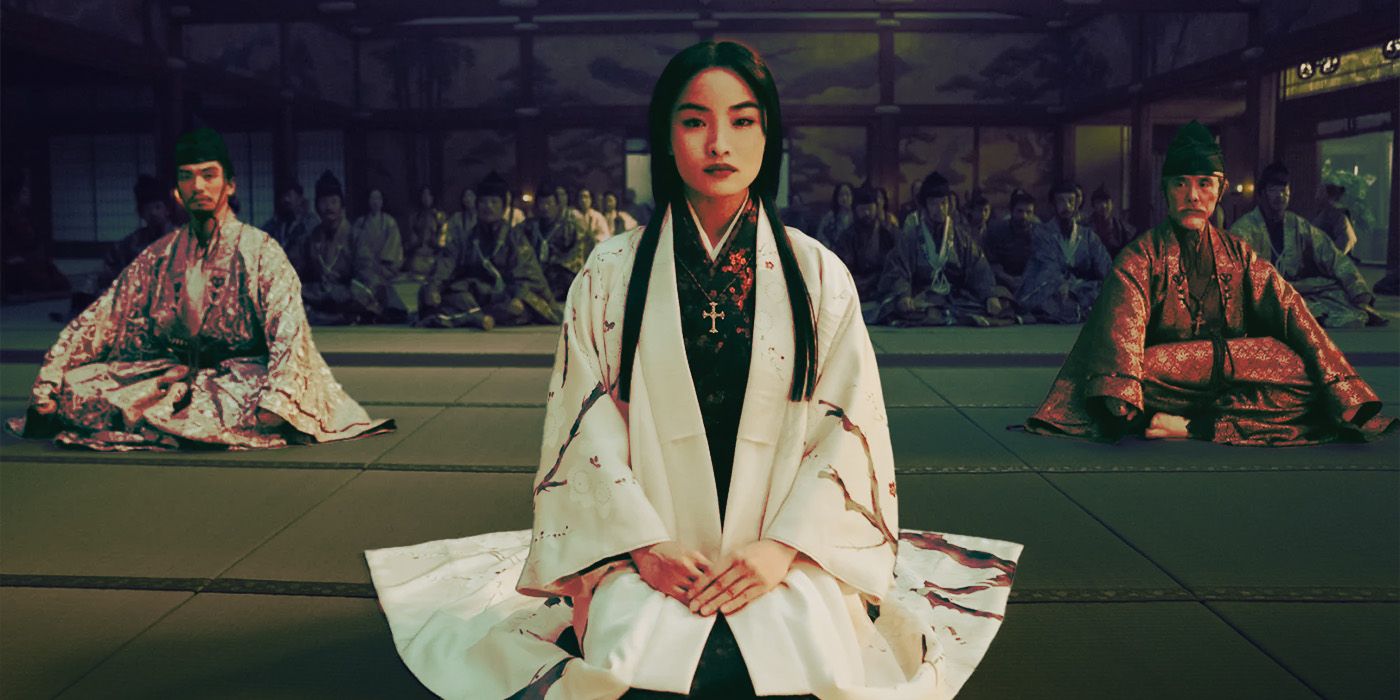Despite being in two different genres (and galaxies), FX’s Shōgun learned a valuable lesson from the Star Wars franchise.

FX’s Shōgun made the brave and authentic decision to completely embrace its Japanese characters’ perspectives. The new series gives these characters complete agency, unlike the 1980s Richard Chamberlain version which limited its story’s scope to Blackthorne’s narrative. One method the show’s creators, Justin Marks and Rachel Kondo, used to enforce this idea was to commit to its Japanese characters only speaking in Japanese, as they did in the book — and would in real life.
Shōgun is the story of a ‘Stranger in a Strange Land.’ After an English sailor, John Blackthorne (Cosmo Jarvis), shipwrecks off the coast of Japan, he is quickly embroiled in the country’s ongoing political divide as it begins to boil over into all-out war. A large portion of the show’s conflict and narrative comes from the translation problems between Blackthorne and the Japanese characters, who use several interpreters to translate for Blackthorne. As a result, well over 60% of the show’s dialogue is in Japanese. This meant Marks and Kondo had to craft perfect subtitles to ensure it didn’t lose potential audiences, and it drew inspiration from a very surprising place.
Shōgun Learned to Craft Perfect Subtitles from Star Wars
When you think of Star Wars, the last thing you probably think about is the subtitles. While most of the characters speak English, the franchise is home to dozens of alien languages, all of which are presented on-screen. Some audiences today have a major problem with subtitles, stating that they draw them out of the cinematic experience, and break the suspension of disbelief. However, no one has complained about the subtitles in the Star Wars franchise. While it may seem like this is because there aren’t many, it’s actually because they’re crafted so well that they keep audiences engaged.
Justin Marks has strong opinions on subtitles. Shōgun‘s co-creator sat down with the Empire Podcast to discuss the show, and during that interview, he explained the process of creating the show’s subtitles. Marks said he sympathizes with audiences who find subtitles to be a barrier. He places the blame on the studios and production companies who view subtitles as an afterthought, being hastily put together in post-production. Marks and Kondo designed the show’s cinematography around the fact that subtitles would feature in over 60% of the dialogue. They then had their colorists go through the shots, frame-by-frame in post-production, to ensure that none of the words were being lost against the backgrounds.
“I looked at some of the best subtitles anyone’s ever done. I looked at subtitles for Star Wars movies.”
Justin Marks said he started the subtitles design process by taking the font and design from the Star Wars subtitles. Marks then adapted Shōgun‘s subtitles using this template. Even amateur Star Wars fans will remember the franchise’s signature bold, drop-shadowed subtitles. The font (Trade Gothic Bold for all the typography nerds out there) features in some of the most memorable moments in the Star Wars franchise, like Han and Greedo’s encounter in the Mos Eisley Cantina. The colorization, font size, and placement make these subtitles feel like a natural part of the image, without pulling audiences away from the cinematic experience.
A simple, but incredibly effective fix Marks used to drastically improve Shōgun‘s subtitles was to present them higher up on the screen. Almost every cinephile — even the die-hard subtitle enjoyers — are in agreement that reading subtitles at the bottom of the screen can detract from embracing a film or show’s visual elements. Marks refers to this phenomenon as ‘The Drop’, where our eyes are forced to fall to the bottom of the screen to keep up with the story. To combat this, Marks simply moved the subtitles higher up the screen, so they could be read in tandem with witnessing the Japanese actors’ incredible performances. This was easily achieved because of how Marks and Kondo composed their cinematography with the subtitles in mind.
Shōgun’s Creators Want to Change Studios’ Attitudes Towards Subtitles
It’s safe to say that Justin Marks has many issues with how studios perceive subtitles. The complete disregard for the tool, resulting in audiences struggling to deal with them, has potentially resulted in many amazing international stories not being produced because of audiences’ pre-conceptions of subtitles. Marks hopes that other studios will look at the subtitle work on FX’s Shōgun and learn key lessons from it.
Marks’ attention to detail regarding Shōgun‘s subtitles is a far cry from that seen in the 1980 version. That adaptation, which starred Richard Chamberlain and Toshiro Mifune, didn’t feature subtitles at all. Instead, the Japanese dialogue was strangely dubbed over by Hollywood legend Orson Wells. However, Wells would not directly dub the Japanese characters’ dialogue. Instead, he would summarize their words for Blackthorne (and the audience), almost like an ethereal interpreter. As surreal as it would be to see FX’s adaptation embrace this bizarre technique, embracing subtitles allows the performances of the show’s Japanese cast to shine through by their own merit.
Justin Marks and Rachel Kondo’s respect for subtitles was a result of their respect for giving their Japanese characters a voice. While Star Wars laid the groundwork for Shōgun‘s subtitles, the pair hope that studios will be able to embrace the storytelling tool, and fully utilize it to its maximum potential. Stream Shōgun on Hulu now.





